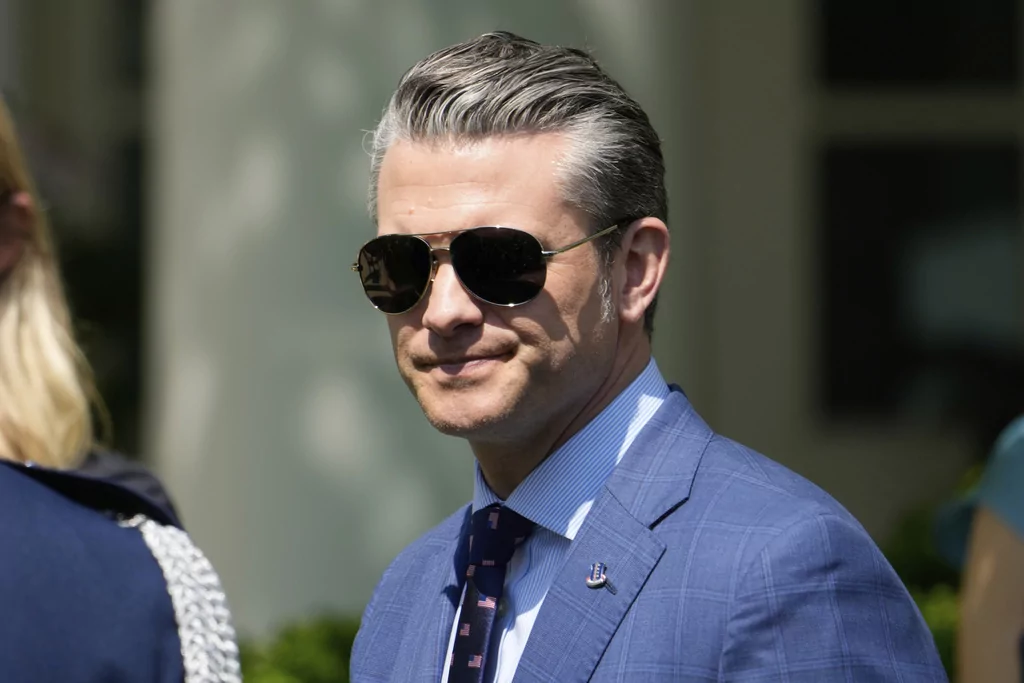Defense Secretary Pete Hegseth directed the Army to undergo a “comprehensive transformation” as he is calling for the prioritization of defending the homeland and deterring China in the Pacific region.
Hegseth, who gave the order via a memorandum, is coming off several weeks of intense scrutiny as he faces questions about his competency in the position.
He called on Army Secretary Daniel Driscoll to create a comprehensive strategy to eliminate wasteful spending, reform the acquisition process, modernize inefficient defense contracts, and more.
“What we’ve learned in the last couple of years of the conflict in Ukraine is that the old way of doing war will no longer suffice, and under the leadership of President Trump and Secretary of Defense Hegseth, they basically have empowered the United States Army to go make the hard decisions and the hard changes, to reallocate our dollars to best position our soldiers to be the most lethal that they can be,” Driscoll said Thursday on Fox & Friends.
Hegseth called for the merging of the offices of Army Futures Command and the Training and Doctrine Command into one structure and U.S. Army North and U.S. Army South into a singular Force Command focused on domestic defense.

Earlier this week, the leaders of the Senate and House Armed Services committees unveiled a plan for a $150 billion increase in new defense spending for fiscal 2025. Hegseth has said the fiscal 2026 budget request, which will likely be released in the coming weeks, is expected to be the country’s first-ever trillion-dollar defense budget.
The Trump administration has sought to drastically cut federal spending across the government. At the Defense Department, however, leaders, along with the Department for Government Efficiency, have sought to identify $50 billion in Biden-era spending that they deem expendable to reallocate it elsewhere.
“We’re cutting headquarters,” Gen. Randy George, the Army chief of staff, said on Fox & Friends. “We’re cutting some of the bloat. Making sure that we get after the inefficiencies so that we are completely focused on buying war-winning technologies. That’s exactly what we need to do.”
Unmanned aerial vehicles, or drones, have become a hot topic as they have been used in conflicts across the globe. Cheap and low-tech, they have played a dominant role in the Russia-Ukraine war.
The Army intends to equip each combat division with around 1,000 drones as it phases out outdated models and other weapons, per the Wall Street Journal.
There was also the chaos late last year when swarms of unknown drones were visible across the eastern seaboard. There were roughly 350 drone incursions at more than 100 U.S. military installations in the past year alone, according to the Pentagon.
“The homeland is no longer a sanctuary,” Navy Rear Adm. Paul Spedero Jr., vice director for operations on the Joint Chiefs of Staff, told the House Oversight Committee earlier this week. “And should our adversary choose to employ drones for surveillance or even attack. We would not be prepared to adequately defend our homeland and only marginally capable to defend our military installations.”
Maj. Gen. David Stewart, the director of the Joint Counter-Small Unmanned Aircraft Systems Office, told lawmakers on the House Armed Services Subcommittee on Tactical Air and Land Forces on Thursday that his office “assesses urgent capability gaps” in its ability to defend the homeland from drones.
CENTCOM INVESTIGATES REPORTS YEMEN STRIKE KILLED DOZENS OF MIGRANTS
Drones can be used for intelligence, surveillance, and reconnaissance, known as ISR, or larger ones that can conduct kinetic attacks, such as dropping bombs.
Lt. Gen. Robert Collins, the principal military deputy to the assistant secretary of the Army, was asked about current detection gaps near military installations. He pointed to “our ability to sense and look through the clutter,” which he said “is a unique thing as part of the urban environment is one area that we’re specifically looking at.”











